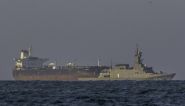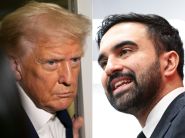- Home
- Arab World
- Iran: The Swan Song!

©This is Beirut
Some regimes govern with ideas; others thrive on chaos. Iran is clearly in the latter camp, lighting fires across the Middle East while hoping the smoke will hide its failures.
Since 1982, Tehran has treated Lebanon—and its political-military proxy, Hezbollah—like a live grenade waved during negotiations: always a threat, never a plan.
For the Islamic Republic, Lebanon isn’t a partner or an ally. It’s a strategic hostage. Hezbollah, turned into an arm of the Revolutionary Guards, is Tehran’s regional mouthpiece.
On the streets of Tehran, Isfahan, or Shiraz, the only path that matters is survival.
While Iran’s leaders pile up empty slogans, drones, missiles, and militias in their ideological showcase, the real Iran is falling apart: the economy gasping, the currency plunging, corruption spreading like a cancer, infrastructure crumbling, and a historic drought piling disaster upon disaster.
The contrast is stark: a “state” chasing ambitions abroad while its people queue for water.
In fact, the mullahs’ regime has never been this fragile since 1979.
In its reckless forward rush, Iran has made a choice: the more the region burns, the stronger it believes it can negotiate. Its “diplomatic art” boils down to one thing, waving Hezbollah as a permanent threat to any discussion about its nuclear or ballistic programs. A geopolitical extortion in plain sight.
A ruined country playing at being an empire.
The Iranian regime invests in everything except in its own people.
Meanwhile in Iraq, during the latest parliamentary elections, pro-Iranian parties emerged as kingmakers despite a country drained, saturated with militias, and where Tehran’s influence is already suffocating entire sectors of society. A relative victory, but far from insignificant. It could pave the way for an Iraqi version of the Lebanese model: a weakened state, a political class under pressure, and Iranian militias pulling the strings. For regional observers, the message is clear. If Lebanon is the showcase, Iraq is now the workshop.
As for Hezbollah, it keeps repeating its grand narrative: resist, defend, represent. But no one is buying it anymore.
Simultaneously, the Saudi crown prince is received with full pomp in Washington and signs contracts worth a thousand billion dollars with Donald Trump. Even better, Mohammed bin Salman no longer rules out the option of joining the Abraham Accords.
The Middle East is being reshaped for decades to come. The only obstacles are Tehran and its allies.
Faced with this geopolitical deadlock, talk is growing of a new Israeli strike on Iran, possibly alongside actions against Hezbollah in Lebanon, with the blessing of the United States. The previous strike took place during the 12-day war last June, halted when Donald Trump slammed his fist on the table: “Stop. Enough.” The result: Israel grounded its planes… temporarily.
Today, the prospect of a new war feels increasingly real. And this time, the regime would not survive. Some are already thinking about the “day after” in Iran (yes, even here). The mullahs and Khamenei would lose power. But who could step in to prevent Iran from fracturing into a mosaic of competing entities?
The people’s Mujahidin? They are armed and well-equipped, but too “Marxist.”
The Shah’s son? The people have no nostalgia for the imperial era.
One name seems to be muttered: Mohammed Javad Zarif. Known as a moderate, he is well-known to Westerners. The former foreign minister was the architect of the 2015 nuclear deal. He studied in the United States, speaks several languages, and is sometimes described as an adept of “smile diplomacy”, a rare skill in a country ruled by black flags.
As the Bible says, “Those who sow the wind will reap the whirlwind.” It is time to take to heart a phrase that is 2,800 years old.
Read more





Comments